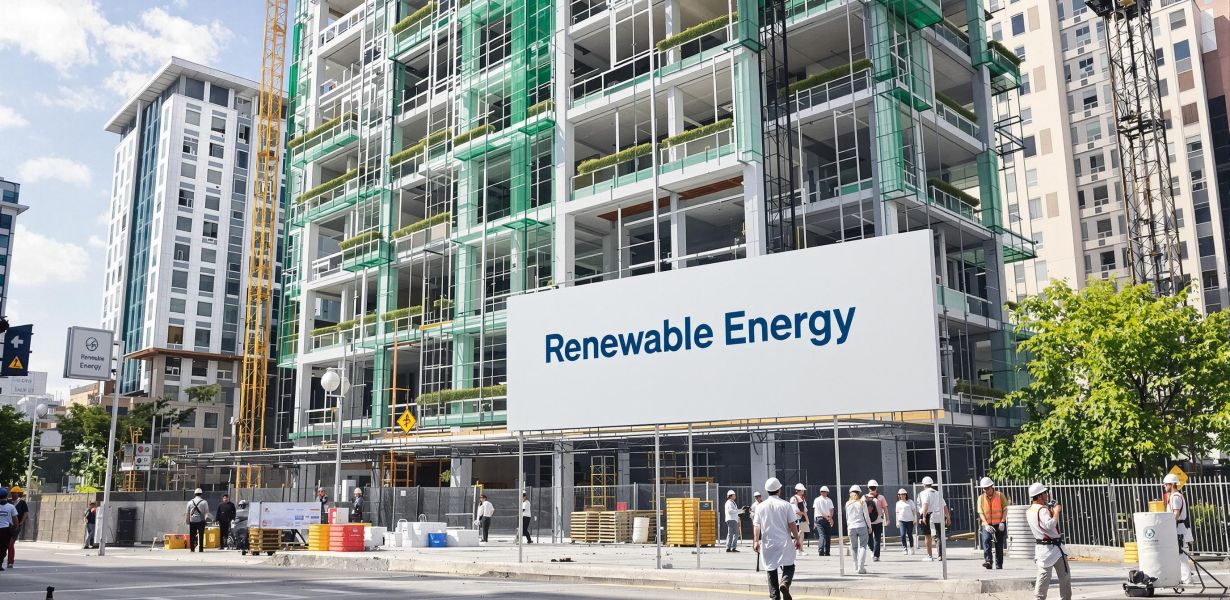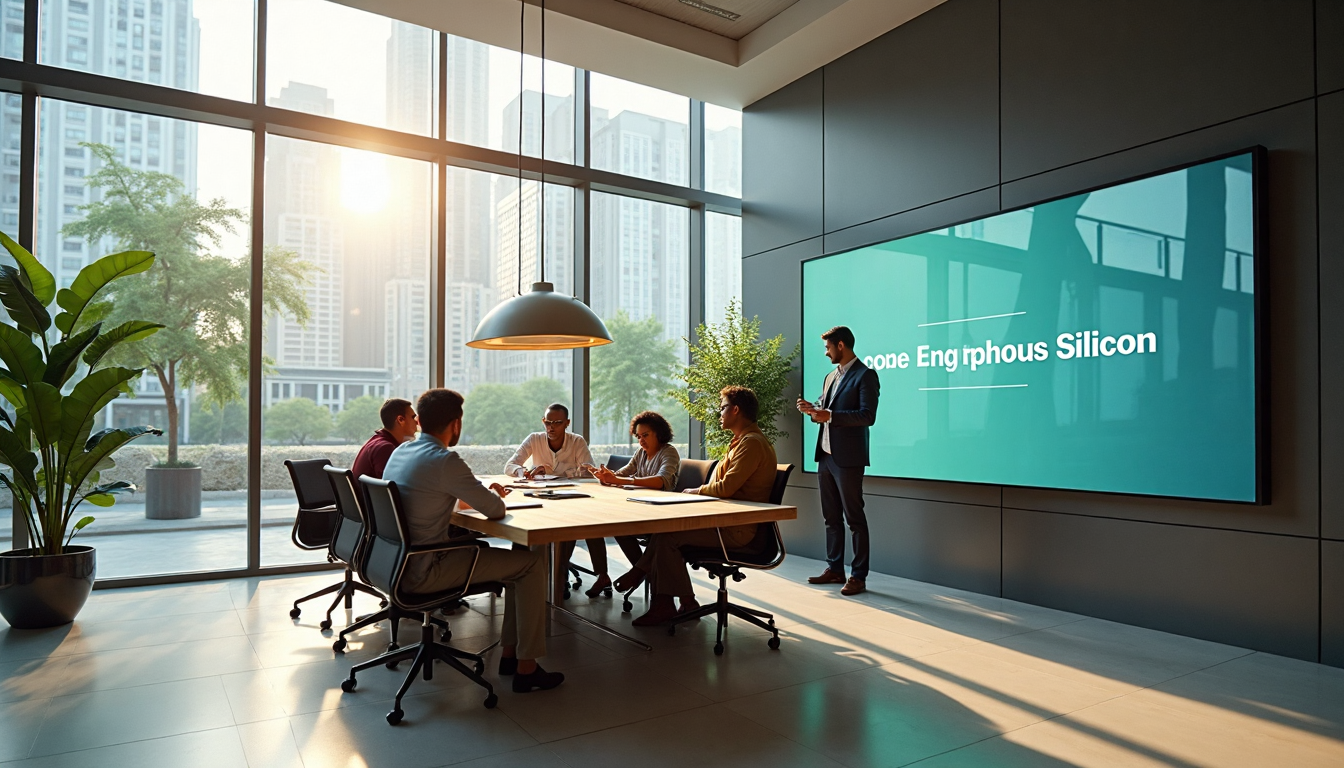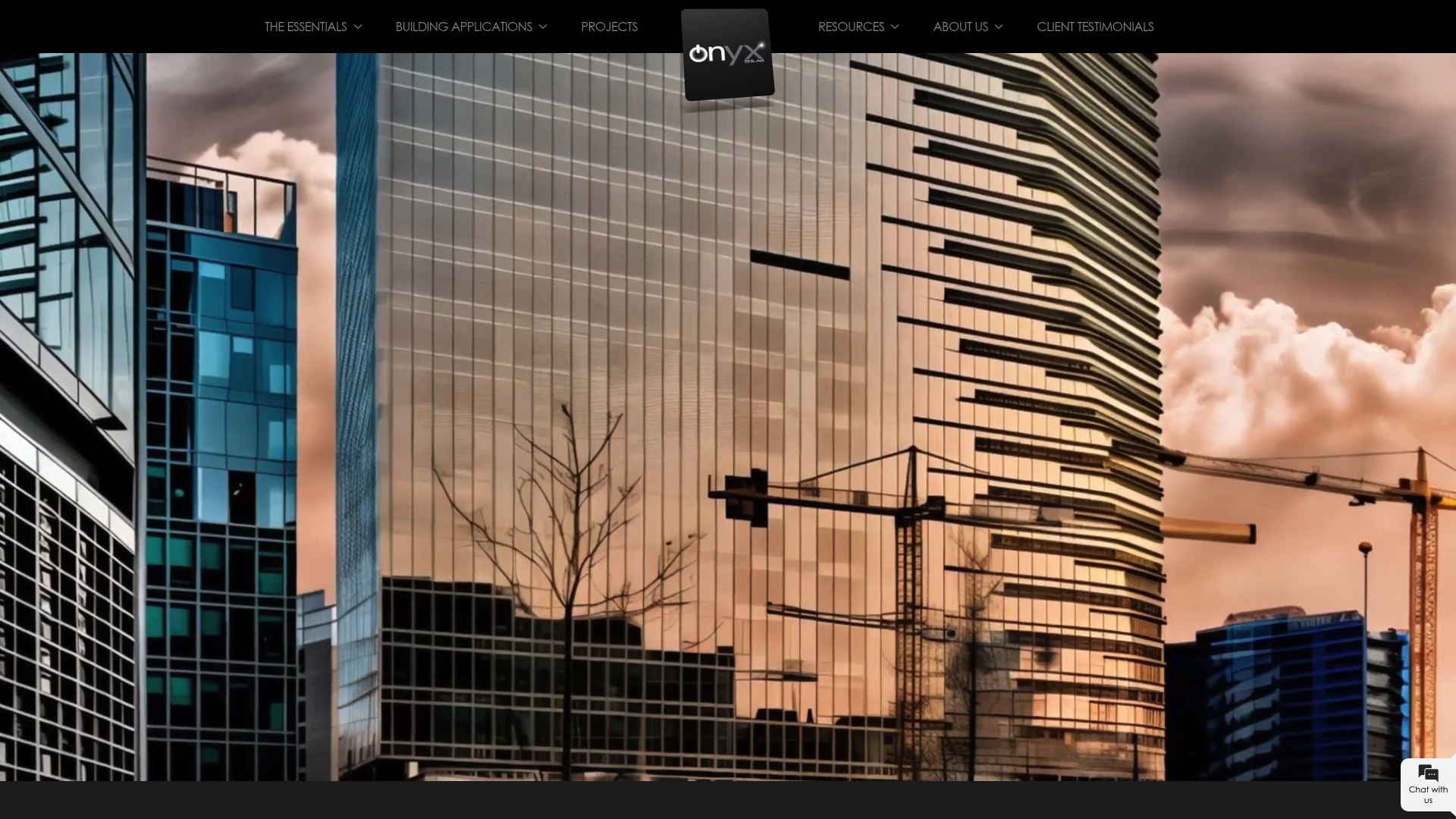
July 15, 2025
Onyx Solar USA
79 Madison Avenue, Ste. #231
New York, NY 10016
usa@onyxsolar.com
+1 917 261 4783
Onyx Solar Spain
Calle Río Cea 1, 46,
05004 Ávila. Spain.
info@onyxsolar.com
+34 920 21 00 50

Amorphous silicon is changing how buildings create and use energy. Here is something you may not expect. Its production uses significantly less energy compared to traditional crystalline silicon, leading to a much lower carbon footprint. Instead of seeing building materials as just static parts of construction, think of them as active power sources shaping the future of sustainable architecture.
| Takeaway | Explanation |
|---|---|
| Flexible Integration | Amorphous silicon’s thin-film nature allows for creative applications in architectural design, making it suitable for windows, facades, and roofing, while maintaining structural aesthetics. |
| Enhanced Energy Generation | Its high absorption coefficient enables effective sunlight capture, even in low light, facilitating consistent energy production in urban environments with variable light exposure. |
| Lower Environmental Impact | The production of amorphous silicon is less energy-intensive than traditional crystalline silicon, resulting in a lower carbon footprint and supporting sustainability objectives in construction. |
| Adaptive and Resilient Design | Amorphous silicon performs reliably across various environmental conditions, making it ideal for modern building challenges, such as architectural flexibility and energy efficiency. |
| Economic Benefits | The technology translates into reduced energy costs, lower installation expenses, and extended material lifespan, offering compelling economic advantages for sustainable construction projects. |
Amorphous silicon represents a fascinating alternative to traditional crystalline silicon materials, offering unique properties that make it increasingly valuable in sustainable building technologies. Unlike its crystalline counterpart, amorphous silicon features a non-ordered atomic structure that fundamentally transforms its electronic and mechanical characteristics.
![]()
At its core, amorphous silicon is a non-crystalline form of silicon characterized by a random network of silicon atoms. Wikipedia explains that this structure lacks the long-range periodic arrangement found in traditional crystalline silicon. This seemingly chaotic atomic configuration actually provides remarkable flexibility in material design and application.
The most significant variant, hydrogenated amorphous silicon (a-Si:H), introduces hydrogen atoms into the silicon network. Research published in AIP demonstrates that these hydrogen atoms play a crucial role in passivating dangling bonds, which dramatically reduces material defects and enhances electronic properties.
The unique structure of amorphous silicon enables extraordinary performance characteristics that differ significantly from crystalline silicon. Hydrogen incorporation allows for improved electronic conductivity and mechanical flexibility. Specifically, the mechanical properties such as Young’s modulus and yield strength can be precisely tuned by adjusting hydrogen concentration.
In building technologies, this translates to materials that can be thinner, more adaptable, and potentially more cost-effective than traditional silicon-based components. Architects and engineers can leverage these properties to create innovative photovoltaic solutions that integrate seamlessly with architectural designs.
Amorphous silicon’s flexibility makes it particularly compelling for sustainable building applications. Its ability to be deposited as thin films allows for integration into various architectural elements such as windows, facades, and roofing materials. Onyx Solar’s BIPV solutions capitalize on these unique material characteristics, transforming building surfaces into active energy-generating components.
The material’s capacity to absorb light across a broader spectrum, even in low-light conditions, gives it a significant advantage over traditional crystalline solar technologies. This means buildings can generate electricity more consistently and efficiently, supporting the transition toward net-zero energy structures.
Understanding amorphous silicon goes beyond technical specifications. It represents a paradigm shift in how we conceptualize building materials - not just as passive structural elements, but as dynamic, energy-producing systems that contribute to a more sustainable built environment.
Amorphous silicon’s performance characteristics represent a critical consideration for architects and building design professionals seeking advanced sustainable technologies. The material’s unique properties differentiate it from traditional photovoltaic solutions, offering compelling advantages in specific architectural applications.
Faster Capital research highlights that amorphous silicon solar cells possess an exceptionally high absorption coefficient. This characteristic enables the material to capture substantial sunlight even with incredibly thin layers measuring just 1-2 micrometers. Such remarkable light absorption translates directly into the potential for lightweight, flexible solar panel designs that can be seamlessly integrated into building surfaces.
However, energy conversion efficiency presents a nuanced performance metric. While amorphous silicon panels typically demonstrate lower efficiency rates compared to crystalline silicon panels, their unique characteristics make them advantageous in specific scenarios. The ability to generate electricity under diverse lighting conditions provides a significant operational benefit, particularly in urban environments with variable light exposure.
One critical performance factor that engineers must consider is the Staebler–Wronski effect, which causes an initial efficiency reduction of 10% to 30% during the first six months of operation. This phenomenon occurs due to light-induced structural changes within the amorphous silicon network. After this initial degradation period, the solar cell’s performance typically stabilizes, offering predictable long-term energy generation capabilities.
The material’s thermal stability further enhances its suitability for architectural applications. Amorphous silicon can be deposited at remarkably low temperatures, as low as 75 degrees Celsius. Wikipedia notes this low-temperature deposition enables integration with diverse substrates including glass, metal, plastic, and even paper. Such flexibility opens unprecedented design possibilities for building-integrated photovoltaic systems.
Architects and sustainability professionals appreciate amorphous silicon’s material adaptability. Its thin-film nature allows for creative architectural implementations that would be challenging or impossible with traditional solar technologies. The material can be applied as semi-transparent layers in windows, integrated into facade elements, or used as lightweight roofing components.
Manufacturing considerations also play a crucial role in evaluating amorphous silicon’s performance. The relatively low production temperatures and material efficiency contribute to reduced carbon footprint during manufacturing. Additionally, the potential for recycling and repurposing these thin-film solar components aligns with circular economy principles increasingly demanded by sustainable design standards.
Understanding these key properties and performance factors empowers design professionals to make informed decisions about incorporating amorphous silicon technologies into their sustainable building strategies. While not a universal solution, amorphous silicon represents a powerful tool in the evolving landscape of energy-generating architectural elements.
To clarify the comparison between amorphous silicon and traditional crystalline silicon, the following table summarizes key differences mentioned in this section:
| Property | Amorphous Silicon | Crystalline Silicon |
|---|---|---|
| Atomic Structure | Non-ordered, random | Long-range periodic order |
| Layer Thickness Needed for Absorption | 1–2 µm | 150–200 µm |
| Light Absorption | High, even with thin films | High, but requires thicker material |
| Energy Conversion Efficiency | Lower, but effective in low light | Higher, but less effective in low light |
| Manufacturing Temperature | As low as 75°C | ~1000°C and above |
| Substrate Compatibility | Glass, metal, plastic, paper | Mainly rigid substrates (glass, silicon) |
| Initial Degradation (Staebler–Wronski) | 10–30% in 6 months, then stabilizes | Minimal |
| Carbon Footprint in Production | Much lower | Higher |

Amorphous silicon technology is revolutionizing architectural design by offering innovative solutions that seamlessly integrate renewable energy generation with building aesthetics. Its unique properties enable architects and designers to reimagine building surfaces as active energy-producing elements.
Research from the National Renewable Energy Laboratory demonstrates that amorphous silicon photovoltaic modules can be deposited on glass and flexible substrates, creating unprecedented opportunities for architectural integration. The technology allows for the creation of solar-powered building facades that generate electricity while maintaining aesthetic appeal.
Transparent photovoltaic facades offer remarkable solutions for modern buildings. University research highlights how these innovative systems address critical challenges like building overheating and ventilation inefficiencies while simultaneously generating clean electricity. This dual-purpose approach transforms traditional building envelopes from passive structural elements into active energy management systems.
Blikai research emphasizes the material’s exceptional flexibility, enabling integration into diverse architectural elements. Architects can now incorporate photovoltaic technologies into:
This versatility allows designers to maintain architectural aesthetics while introducing sustainable energy generation capabilities. The thin-film nature of amorphous silicon means these applications can be nearly invisible, preserving the original design intent.
Modern building design demands materials that perform consistently across varied environmental conditions. Amorphous silicon excels in this regard, demonstrating remarkable adaptability. Its small temperature coefficient ensures consistent performance in warm weather, making it particularly suitable for regions with high solar radiation.
The material’s low-temperature manufacturing process and ability to generate electricity under diverse lighting conditions further enhance its appeal. Urban environments with complex shading and variable light exposure become viable locations for solar energy generation, expanding the potential for sustainable architectural design.
As building design continues to evolve, amorphous silicon represents a critical technology bridging aesthetic requirements with sustainable energy generation. By reimagining building surfaces as dynamic, energy-producing systems, architects can create structures that not only minimize environmental impact but actively contribute to renewable energy infrastructure.
For a quick overview, the following table outlines the main architectural applications of amorphous silicon discussed above and the benefits each provides:
| Building Element | Type of Integration | Key Benefits |
|---|---|---|
| Windows | Semi-transparent PV modules | Generates electricity, maintains visibility |
| Rooftops | Lightweight solar panels | Energy generation, easy installation |
| Facades | Thin-film on glass/metal/plastic surfaces | Aesthetic integration, renewable energy |
| Skylights | Energy-generating overhead PV installations | Provides natural light, generates energy |
Amorphous silicon technologies are emerging as a transformative solution for sustainable construction projects, offering architects and developers innovative pathways to achieve energy efficiency and environmental performance goals. By integrating these advanced photovoltaic materials, construction professionals can address multiple sustainability challenges simultaneously.
Modern Physics research reveals that amorphous silicon solar cell production is significantly less energy-intensive compared to traditional crystalline silicon cells. This characteristic translates into a substantially lower carbon footprint, aligning directly with global sustainability objectives.
Research from the National Renewable Energy Laboratory demonstrates that these photovoltaic modules can be integrated into diverse building materials, enabling construction projects to transform passive surfaces into active energy-generating systems. By generating on-site renewable electricity, buildings can dramatically reduce their reliance on grid-based power and minimize greenhouse gas emissions.
Sustainable construction projects require technologies that deliver both environmental and economic benefits. Amorphous silicon offers compelling advantages in this regard. The material’s performance characteristics, such as excellent low-light energy generation and minimal temperature sensitivity, make it an attractive option for building-integrated photovoltaic solutions.
Key economic benefits include:
Modern sustainable construction demands materials that can perform consistently across diverse environmental conditions. Amorphous silicon excels in this domain, offering remarkable adaptability. Its ability to generate electricity under varied lighting conditions makes it particularly valuable for urban environments with complex architectural landscapes.
The material’s flexibility allows architects to design energy-generating buildings without compromising aesthetic integrity. Semi-transparent modules can be integrated into windows, facades, and roofing, creating structures that are both visually appealing and functionally sophisticated.
Moreover, the low-temperature manufacturing process of amorphous silicon contributes to its sustainability credentials. By requiring less energy during production and offering extended operational performance, these photovoltaic technologies represent a forward-thinking solution for construction projects committed to minimizing environmental impact.
As the built environment continues to evolve, amorphous silicon stands at the forefront of sustainable design, offering a pragmatic and innovative approach to renewable energy integration in architectural projects.
Amorphous silicon is a non-crystalline form of silicon characterized by a random atomic structure. It is used in photovoltaic applications and offers unique properties suited for sustainable building design.
Amorphous silicon has a non-ordered atomic structure and typically requires a thickness of only 1-2 micrometers for effective light absorption, whereas crystalline silicon requires much thicker layers (150-200 micrometers).
Amorphous silicon is used in various architectural applications, including windows, facades, roofing materials, and integrated photovoltaic systems that generate renewable energy while maintaining aesthetic appeal.
The production of amorphous silicon involves significantly less energy compared to crystalline silicon, resulting in a lower carbon footprint. It supports sustainability objectives by transforming building materials into active energy-generating components.
You have seen how amorphous silicon can turn ordinary surfaces into sustainable energy-generating assets. The article explains how traditional materials are no longer enough for projects aiming for real energy efficiency, lower carbon footprints, and flexible design. Are you struggling to meet net-zero goals or seeking new ways to integrate renewable energy without compromising your vision? Onyx Solar transforms building surfaces with advanced Building Integrated Photovoltaic Glass solutions that put these insights into action.

Take the next step and explore real-world applications, case studies, and innovative products on our main site. Discover how you can incorporate amorphous silicon and other smart photovoltaic technologies for a future-proof, sustainable building. Start your project consultation today and power your next design with clean, on-site energy.
Over 500 projects completed across 60 countries on all five continents.
Learn how our photovoltaic solutions are shaping the future of architecture.
Explore our full catalogue available in PDF or as an AUDIOBOOK.